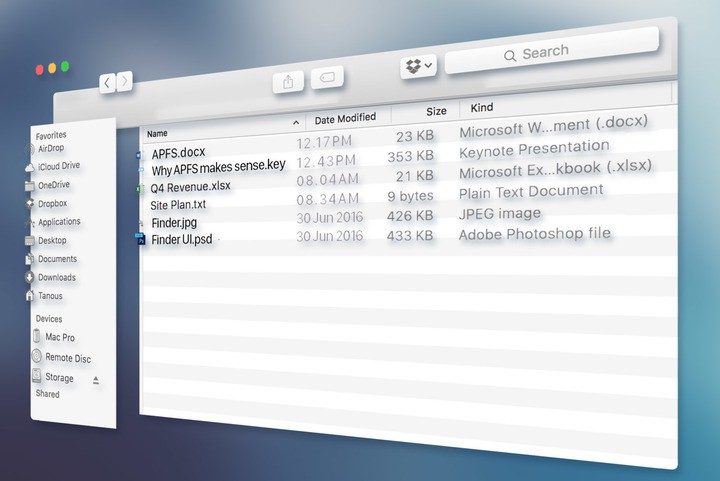(Editor’s Note: This article was originally published in June 30, 2016, but has been updated with new info since the release of iOS 10.3)
It’s hard to believe that Apple’s speedy Macs are still using a file system that was developed more than 30 years ago, when floppy disks and spinning hard drives were considered cutting-edge technology.
But that’s going to change in 2017 with the new Apple File System — or APFS — that debuts in iOS 10.3 and macOS 10.12.4. Here’s everything you need to know about APFS and how it’s going to make your life better, no matter what Apple device(s) you use.
Why APFS makes sense, for Apple and for you
There are a whole bunch of reasons why switching to the new Apple File System makes sense for Cupertino — and for you.
One file system for all Apple products: The big advantage is that APFS can replace all the existing file systems Apple currently uses across its platforms. APFS is suitable for macOS, iOS, tvOS and even watchOS.
Optimized for today’s Apple devices: APFS is also optimized for devices that use flash and solid-state storage — like most of the products Apple sells today. The new Apple file system was built with latency in mind, which makes it particularly beneficial to mobile devices like the iPhone, iPad and Apple Watch.
File systems like Apple’s HFS+, which stems from a platform developed 30 years ago and is still used in OS X today, are instead optimized for systems with multiple drives that handle large files. These things obviously aren’t a priority on platforms like iOS, but faster boot and app loading times are.
APFS means strong encryption: The other big advantage to APFS is that it’s designed with encryption in mind. It combines the full disk encryption features found in the latest versions of OS X with the data protection feature that encrypts every file individually on iOS.
This fits Apple’s focus on privacy and security perfectly. When APFS is made available, you’ll have three options to choose from on macOS: no encryption, single-key encryption and multi-key encryption with per-file keys for file data and a separate key for sensitive metadata.
New Apple File System is future-proof
Not only does APFS come with new features and the ability to take over everything, but it’s also built to last. Apple plans to use it for years to come, and the company has taken steps to ensure that APFS is capable of handling anything that will be thrown at it in the foreseeable future.
APFS supports 64-bit inode numbers, which improves upon the 32-bit file IDs currently supported by HFS+. What that means, in simple terms, is that APFS has the ability to carry more than 9 quintillion files on a single volume (assuming you have room for them).
This goes hand-in-hand with APFS’ extensible block allocator, which allows for “arbitrarily large storage” on a single volume. To improve performance for large volumes, APFS initializes data structures only as necessary, whereas HFS+ initializes the entire storage.
APFS also boasts 1-nanosecond timestamps (as opposed to the one-second timestamps offered by HFS+), supports space-saving sparse files (whereas HFS+ does not), and uses a novel copy-on-write metadata scheme to ensure that updates to the file system are crash-safe.
The downsides of APFS
APFS is pretty terrific, but it isn’t perfect. As it stands, it comes with a number of limitations that could be a problem for some users.
For instance, APFS can’t be used on startup disks or Apple’s Fusion Drives, and filenames are case-sensitive only. What’s more, APFS formatted drives are not recognized by OS X 10.11 Yosemite and earlier, so you won’t be able to transfer files to an older Mac using an APFS drive.
When the new Apple File System will be available
The “next-generation file system for Apple products” was introduced with the launch of iOS 10.3, macOS 10.12.4, tvOS 10.2 and watchOS 3.2 on March 27, 2017.
How to switch to APFS
Switching to the new file system is incredibly simple. All you have to do is install iOS 10.3 and all of your information is automatically switched over. You don’t need to back up your data and start again with a fresh OS install. APFS will be coming to macOS soon.


